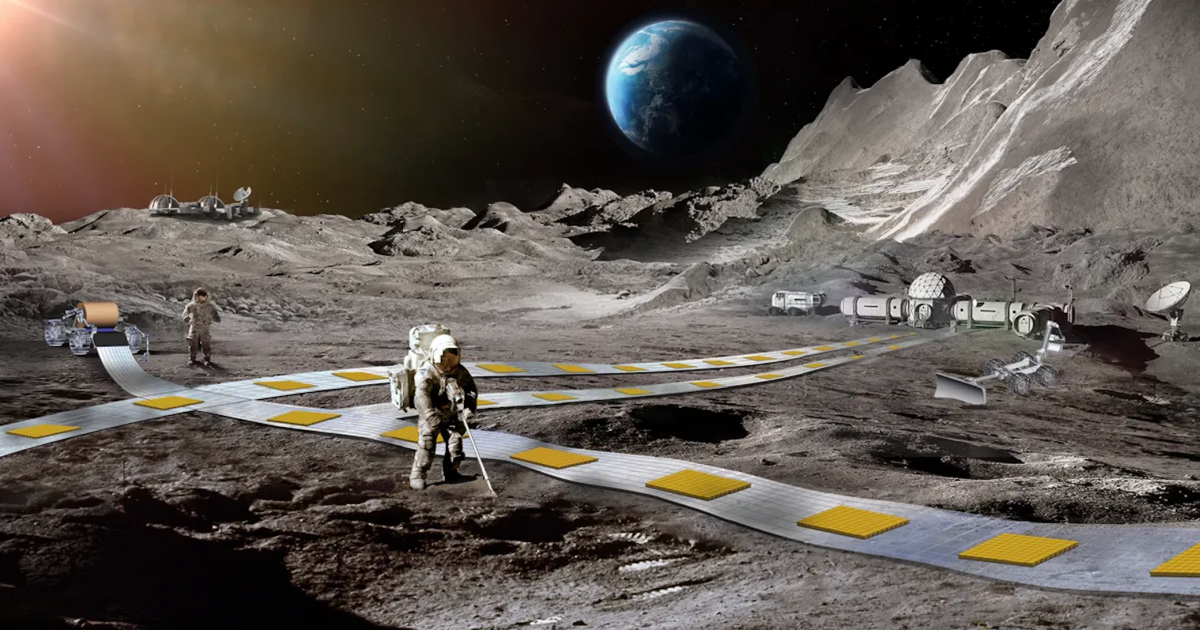




NASA is developing a levitating railway system called Flexible Levitation On A Track (FLOAT) for the Moon. The goal is to provide autonomous, reliable, and efficient payload transportation, supporting NASA's plans for a permanent human presence on the Moon and a lunar economy [ad9dca04] [3aa815fc] [4ac7ad25]. The FLOAT system will consist of levitating robots that move over tracks made of a graphite layer for diamagnetic levitation, a flex circuit for electromagnetic thrust, and a solar panel for energy absorption. These unpowered magnetic robots will be capable of transporting around 100 tons of material per day, enabling the transportation of cargo to and from spacecraft landing zones to a lunar base [ad9dca04] [4ac7ad25]. The lunar railway system, part of NASA's Artemis program, will play a crucial role in the Artemis III mission, which aims to send astronauts back to the lunar surface by 2026 or 2027. It will provide a reliable and efficient means of transporting cargo from landing zones to more permanent outpost settings. Importantly, the lunar railway system will be used exclusively for cargo transport and will not transport astronauts [311bf231] [3aa815fc] [4ac7ad25]. NASA's FLOAT project is one of the six NASA Innovative Advanced Concepts (NIAC) in phase II. Led by Ethan Schaler from NASA's Jet Propulsion Laboratory, the project has a budget of around $600,000 and a timeline that could put it on the Moon in the next decade [ad9dca04] [4ac7ad25]. Last month, NASA also announced new efforts to develop and test new vehicle models designed to explore the Moon, further demonstrating the agency's commitment to lunar exploration [3aa815fc] [4ac7ad25].
Chinese scientists have proposed building a magnetic launcher on the moon to send resources extracted from the lunar surface back to Earth. The magnetic levitation facility would work like an Olympic hammer thrower, rotating at increasing speeds before throwing the launch capsule towards Earth. It would be able to eject payloads twice a day at around 10% of the cost of existing transport methods. The main goal is to extract and return helium-3 to help address Earth's energy crisis. The proposed launch system would use a 50-meter rotating arm and a high-temperature superconducting motor. It would be powered by solar and nuclear energy and designed to last for at least 20 years. The team aims to complete the development of key components by 2030 and full-scale implementation by 2045 [4747b968].